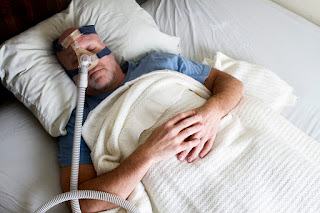Identical signs of brain damage in sleep apnea and Alzheimer's

Identical signs of brain damage in sleep apnea and Alzheimer's New research has confirmed long-suspected links between sleep apnea and Alzheimer's disease, finding identical brain damage signs in both conditions. While the cause of Alzheimer's disease remains a mystery, amyloid plaques that are toxic to brain cells are known indicators of the disease. The new research showed these plaques start in the same place and spread in the same way in the brains of people with obstructive sleep apnea, as in those with Alzheimer's. The clinical study by Australian and Icelandic researchers, led by RMIT University, is published in the journal Sleep . Lead investigator Professor Stephen Robinson said scientists have known the two diseases are related, but what drives the connection is still unclear. "We know that if you have sleep apnea in mid-life, you're more likely to develop Alzheimer's when you're older, and if you have Alzheimer's, you are more likely t...







